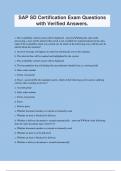Exam (elaborations)
SOLUTIONS MANUAL for Financial Accounting for Decision Makers 2nd Edition Mark DeFond | All Chapters 1-12
SOLUTIONS MANUAL for Financial Accounting for Decision Makers 2nd Edition Mark DeFond ISBN 3142. (All Chapters 1-12).
[Show more]





